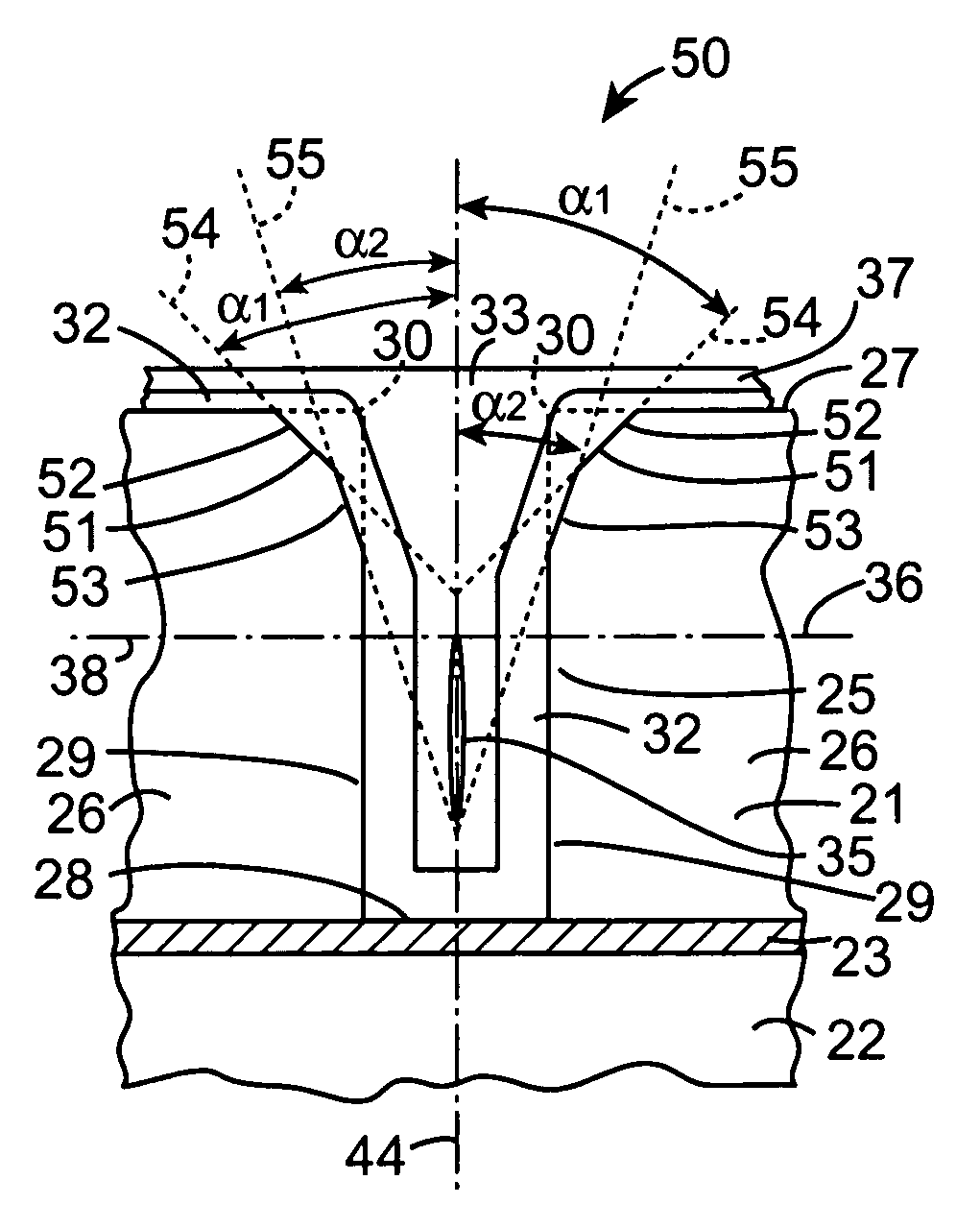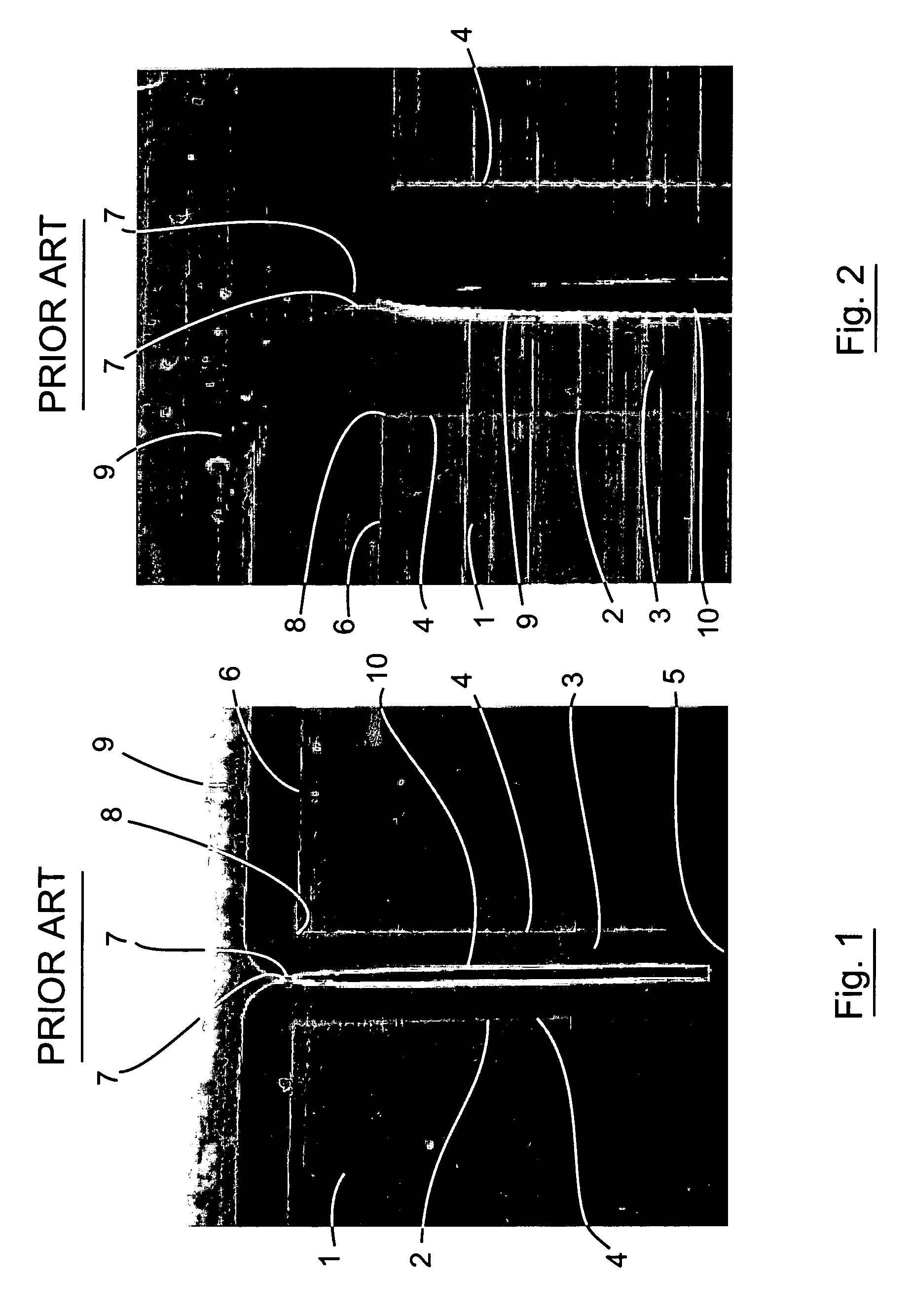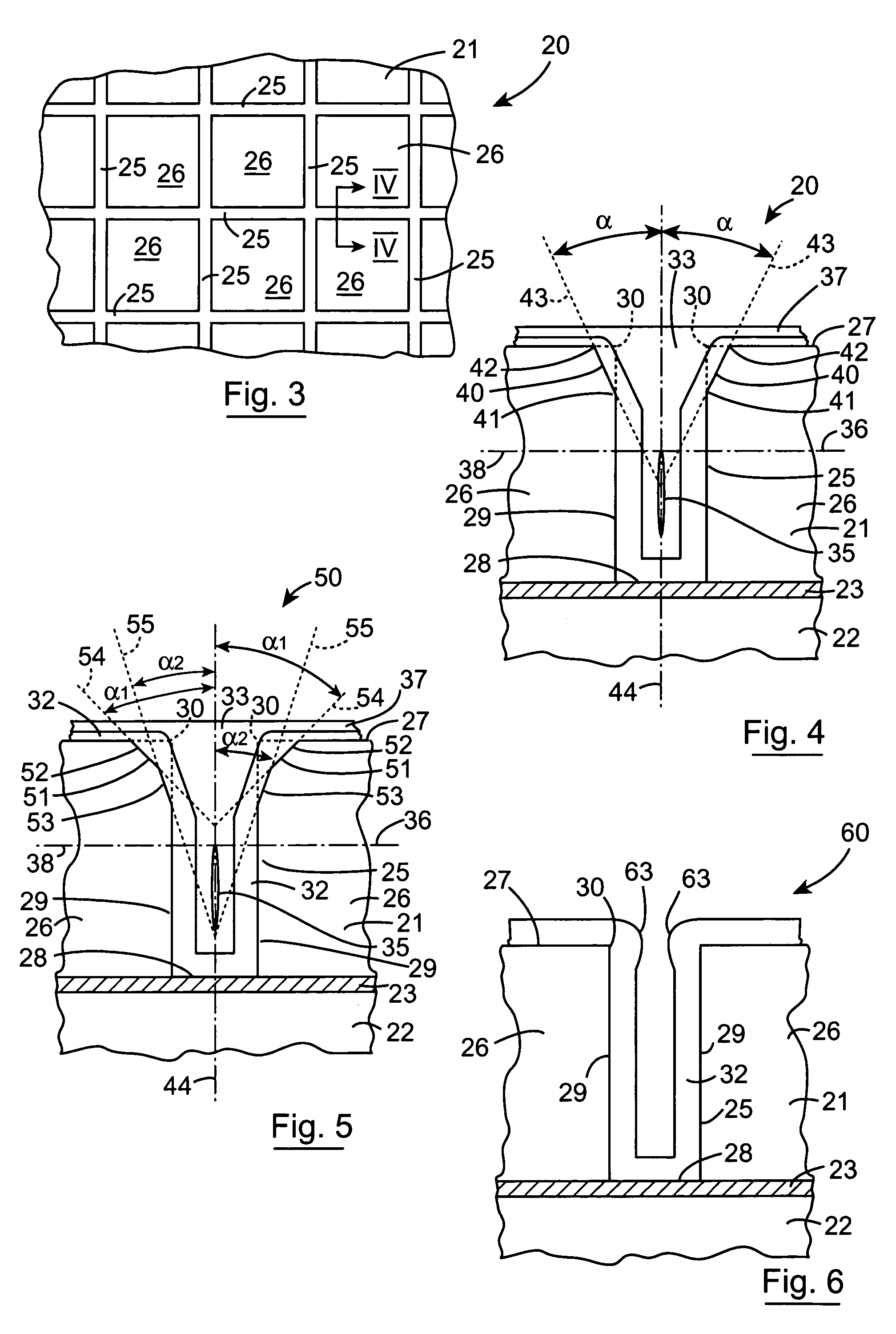Method for forming a filled trench in a semiconductor layer of a semiconductor substrate, and a semiconductor substrate with a semiconductor layer having a filled trench therein
a technology of semiconductor substrate and filled trench, which is applied in the direction of semiconductor devices, electrical devices, basic electric elements, etc., can solve the problems of creating longitudinally extending voids in the trench, the surface of the silicon layer not increasing in depth at a uniform rate, and the filling of such trenches
- Summary
- Abstract
- Description
- Claims
- Application Information
AI Technical Summary
Benefits of technology
Problems solved by technology
Method used
Image
Examples
Embodiment Construction
[0064]Referring now to FIGS. 3 and 4 there is illustrated a portion of an SOI structure according to the invention indicated generally by the reference numeral 20 comprising a silicon layer 21 supported on handle layer 22 with a buried insulating layer 23 located between the silicon layer 21 and the handle layer 22. The silicon layer 21 and the handle layer 22 are formed from respective silicon wafers of single crystal silicon, and the buried insulating layer 23 is an oxide layer which may be thermally grown or deposited on either the handle layer 22 or the silicon layer 21 and then bonded to the other of the two layers. Alternatively, the oxide layer 23 may be thermally grown or deposited on both the silicon layer 21 and the handle layer 22, and then both oxide layers can be bonded together. The construction of such SOI structures will be well known to those skilled in the art. Filled electrical isolating trenches 25 are formed by a method according to the invention in the silicon ...
PUM
 Login to View More
Login to View More Abstract
Description
Claims
Application Information
 Login to View More
Login to View More - R&D
- Intellectual Property
- Life Sciences
- Materials
- Tech Scout
- Unparalleled Data Quality
- Higher Quality Content
- 60% Fewer Hallucinations
Browse by: Latest US Patents, China's latest patents, Technical Efficacy Thesaurus, Application Domain, Technology Topic, Popular Technical Reports.
© 2025 PatSnap. All rights reserved.Legal|Privacy policy|Modern Slavery Act Transparency Statement|Sitemap|About US| Contact US: help@patsnap.com



